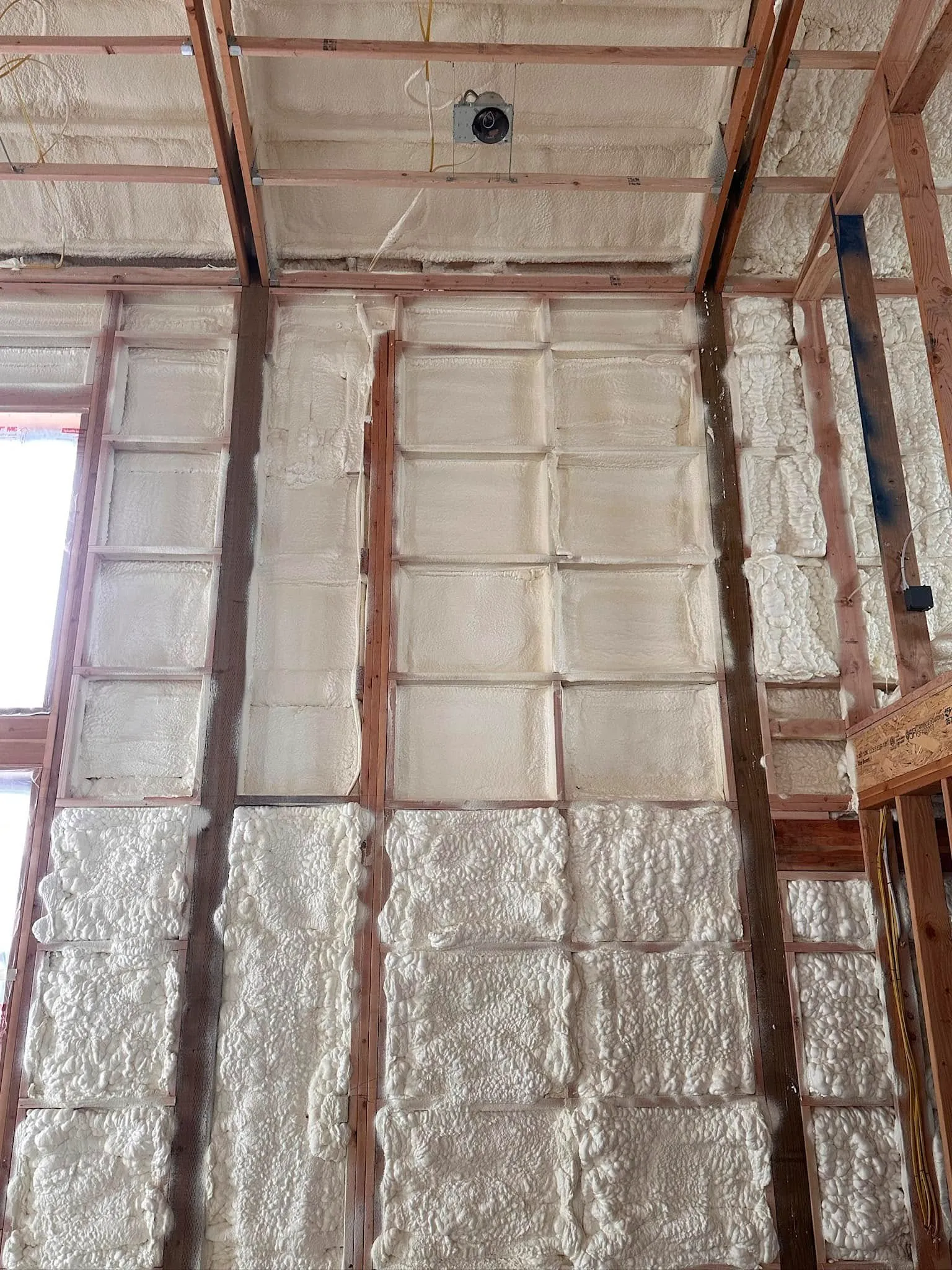Choosing closed-cell spray foam over open-cell typically depends on performance needs related to moisture resistance, structural support, and space limitations. Closed-cell foam is denser, provides a superior vapor barrier, and adds structural integrity, making it a better choice for exterior walls, basements, crawl spaces, and roofs—especially in humid or extreme climates. Open-cell is more cost-effective and works well in interior walls and ceilings where sound dampening and flexibility are priorities.
This guide breaks down the key differences, use cases, and technical data to help professionals and property owners make informed decisions. Based on firsthand field experience with insulation performance across Idaho and surrounding regions, this content reflects conditions that affect real-world installation outcomes.
Key Differences and Applications
Side-by-Side Comparison
| Feature | Closed-Cell Spray Foam | Open-Cell Spray Foam |
|---|---|---|
| R-Value per inch | 6.0 to 7.5 | 3.5 to 4.0 |
| Density | ~2.0 lb/ft³ | ~0.5 lb/ft³ |
| Vapor Barrier | Yes | No |
| Air Seal | Excellent | Very Good |
| Structural Reinforcement | Yes | Minimal |
| Sound Absorption | Moderate | High |
| Water Absorption | Low (less than 1%) | High (20% or more) |
| Application Areas | Roofs, basements, exterior walls | Attics, interior walls, ceilings |
| Expansion Rate | Low (30-40x) | High (100x) |
| Cost | Higher | Lower |
Technical Specifications
| Specification | Closed-Cell Foam | Open-Cell Foam |
|---|---|---|
| Perm Rating | <1.0 (acts as vapor retarder) | >10 (permeable) |
| Compressive Strength | 25-60 psi | 5-10 psi |
| Flame Spread Index (ASTM E84) | <25 | <25 |
| Service Temperature Range | -40°F to 180°F | -40°F to 180°F |
| Thickness for Code Compliance | 1.5 – 2 inches | 3 – 3.5 inches |

Regional Considerations for Idaho and Similar Climates
Closed-cell performs well in Idaho’s cold winters and semi-arid conditions. It reduces condensation risk in crawl spaces and basements where moisture control is critical. It also provides better performance under snow load on roofs.
Open-cell is better suited for conditioned attic spaces and interior wall assemblies where vapor control is not a major concern. In high-altitude or low-humidity zones, it still performs adequately but requires a vapor retarder in certain applications.
Bonus Tip
In areas prone to freeze-thaw cycles, closed-cell spray foam can help protect structural components by minimizing moisture intrusion and adding rigidity.
Things to Consider Before Making a Decision
- Location of Application: Use closed-cell for external surfaces, wet zones, and unvented attics.
- Moisture Exposure: Prioritize closed-cell in areas with potential leaks, floods, or ground moisture.
- Structural Benefit: Closed-cell adds stiffness to wall and roof assemblies.
- Budget: Open-cell is less expensive and easier to install in larger cavities.
- Code Requirements: Verify local codes regarding vapor barriers and thermal resistance.
- Future Access Needs: Open-cell is easier to remove or retrofit in the future.
Bonus Tip
When insulating a roof deck or crawl space in high humidity zones, combining closed-cell with an intumescent coating can meet fire rating and vapor barrier requirements efficiently.
Related Services Available from Valley Spray Works
- Closed-Cell Spray Foam: High-density insulation for moisture control and structural support.
- Open-Cell Spray Foam: Flexible, cost-effective solution for interior sound reduction and wall insulation.
- Spray Foam Roof Insulation: Seals and insulates flat or low-slope roofs, reducing thermal bridging.
- Intumescent Coatings: Applied over foam to improve fire safety compliance and surface durability.
Common Questions
Where should closed-cell foam be prioritized in home construction?
In crawl spaces, exterior walls, under slabs, and roofing systems.
Can open-cell spray foam be used in a basement?
Not recommended unless a vapor barrier is added; better to use closed-cell.
Which type is better for noise control?
Open-cell foam has better sound absorption due to its open structure.
Does closed-cell require more curing time?
No. Both types cure quickly, usually within minutes after application.
Can both types be used together?
Yes. Some projects combine them for cost and performance balance.
Get Expert Insulation Guidance
For technical consultations or insulation assessments, contact Valley Spray Works.
Phone: (208) 539-5281
Email: [email protected]
FAQ
How long does spray foam insulation last?
Both types can last 20+ years if installed correctly and not exposed to UV or physical damage.
Is one type safer for indoor air quality?
Both are safe after curing. Ensure proper ventilation during installation.
What is the best insulation for metal buildings?
Closed-cell foam is preferred for its moisture resistance and structural reinforcement.
Does insulation type affect HVAC sizing?
Yes. Higher R-values from closed-cell can reduce required HVAC capacity.
What maintenance is required post-installation?
Generally none. Periodic inspection for mechanical damage or UV exposure is advised.



